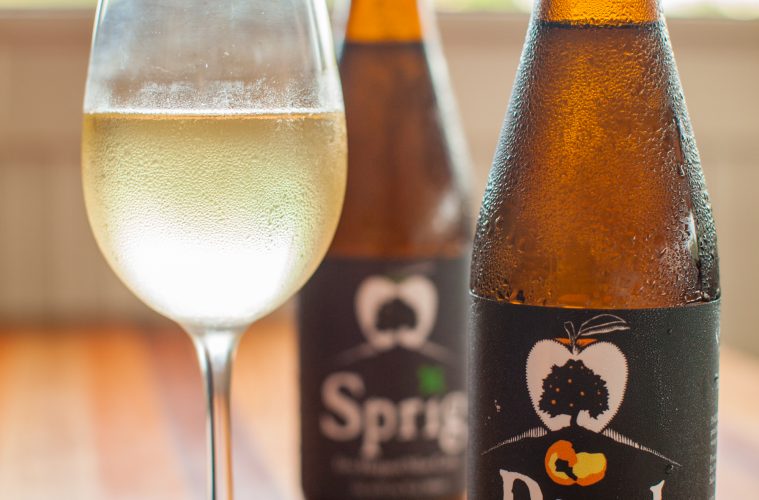While craft beer has been enjoying it’s moment in the spotlight, cider has been quietly moving toward center stage and is poised to steal the show. In fact, cider is the fastest growing alcoholic beverage in the United States, with sales up over 63 percent in the past year. Boston Beer Company’s Angry Orchard brand accounts for half of all cider sales, but the competition is growing—right in their own backyard. Massachusetts is fertile ground for apple growing, with over 100 orchards, and a handful of local companies view the venture as ripe and ready, including, Downeast Cider in Charleston, Bantam Cider in Somerville, Harpoon Cider in Boston, and the North Shore’s Far From the Tree Cider, made in Salem.
So what exactly is cider? Some argue that it suffers a bit of an identity crisis— is it beer or wine? Packaged and sold in cans or bottles in the beer section of most stores, cider is technically made by fermenting apples. Cider can be sweet or dry and crisp like a Champagne depending on the type of apple used, says Howie Correa, owner of Gloucester’s Short & Main and The Market Restaurant. “A lot of industrially made, and thus more widely offered, ciders are designed to be sweet. So, that is the assumption of how cider tastes. But as someone who eats apples, you can really appreciate the fruit’s ability to combine some honey-sweet flavors but also lots of tangy, bright acidity.” This combination of fruit and fizz is a refreshing find for those who don’t care for beer or follow a gluten-free diet.
Most restaurants offer at least one cider on tap these days, with more choices by the bottle. The styles and flavors are as varied as beer, with seasonal offerings like honey, maple, or cinnamon, so it’s worth trying a few until you find a favorite. “I really like Bantam Rojo cider as an off-dry ‘crossover’ cider, with lots of complexity by way of sour cherries and peppercorns,” says Correa. “And Far From the Tree’s Rind cider tastes and feels like a beautiful mash-up of dry cider/Prosecco Col Fondo/Belgian-farmhouse ale.”
The tartness and mouthfeel of cider pairs surprisingly well with a variety of foods, says Correa. “I also like to use dry cider as one would Alsatian and German white wines. So, with fatty pork cuts, smoked meats, smoked fish, or anything with beurre blanc or sauerkraut.” Try cider as an apéritif with oysters and seafood crudo or in place of a sparkling wine for toasts, a growing trend spotted at the nuptials of cider lovers in New England.
For cocktail enthusiasts, cider can be a fun ingredient to incorporate into recipes. “In cocktails, dry ciders can hold the place of citrus or dry vermouth, but add a richness that is compelling. Generally, I love cider in agave-spirit-based drinks. Also, with a combination of honey and Peychaud’s bitters, cider is a great bridge.” Correa created the La Manzanita cocktail recipe (right) using Far From the Tree’s Sprig cider, mint, and hops.
??La Manzanita
Makes one drink
> 1 1/2 oz. Espolon Tequila Blanco
> 1 oz. Far From the Tree Sprig cider
> 1/2 oz. Eden Ice Cider Orleans Bitter vermouth
> 1/2 oz. mint-honey solution
> Bar spoon Kubler absinthe
FOR MINT-HONEY SOLUTION:
Bring 24 ounces of water to a boil. Turn off heat. Put one bunch of fresh mint in pot to steep in water for three minutes. Strain off mint. Bring back to simmer, then turn off heat. Whisk in 20 ounces of pure honey until dissolved. Let cool for two minutes. Put second bunch of mint into pot of honey solution and let steep for at least 30 minutes. Strain mint and refrigerate.
Add all ingredients to a shaker filled with ice and shake for 15 seconds. Double-strain into an old-fashioned or rocks glass with one large ice cube. Garnish with a lemon twist and mint sprig.

